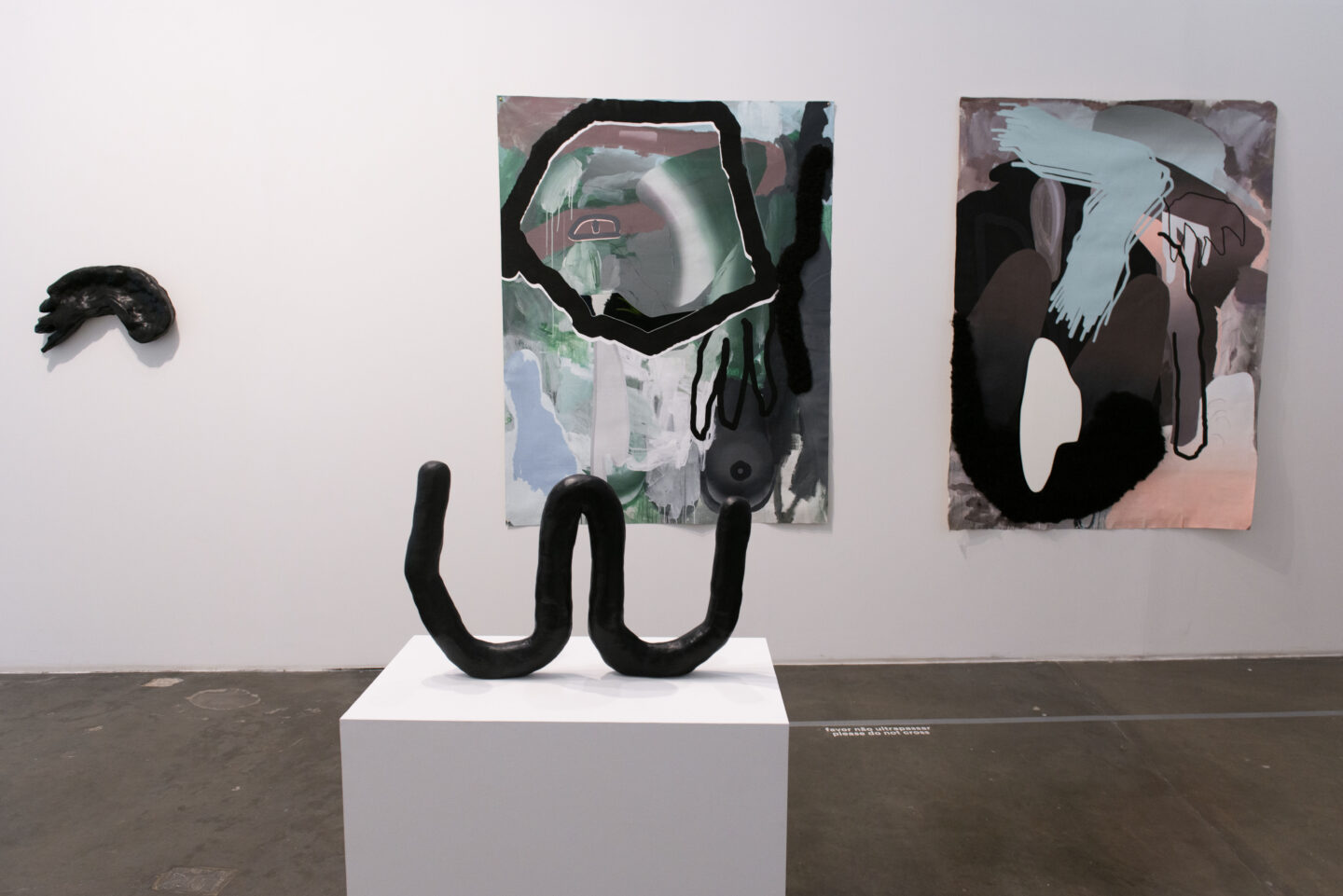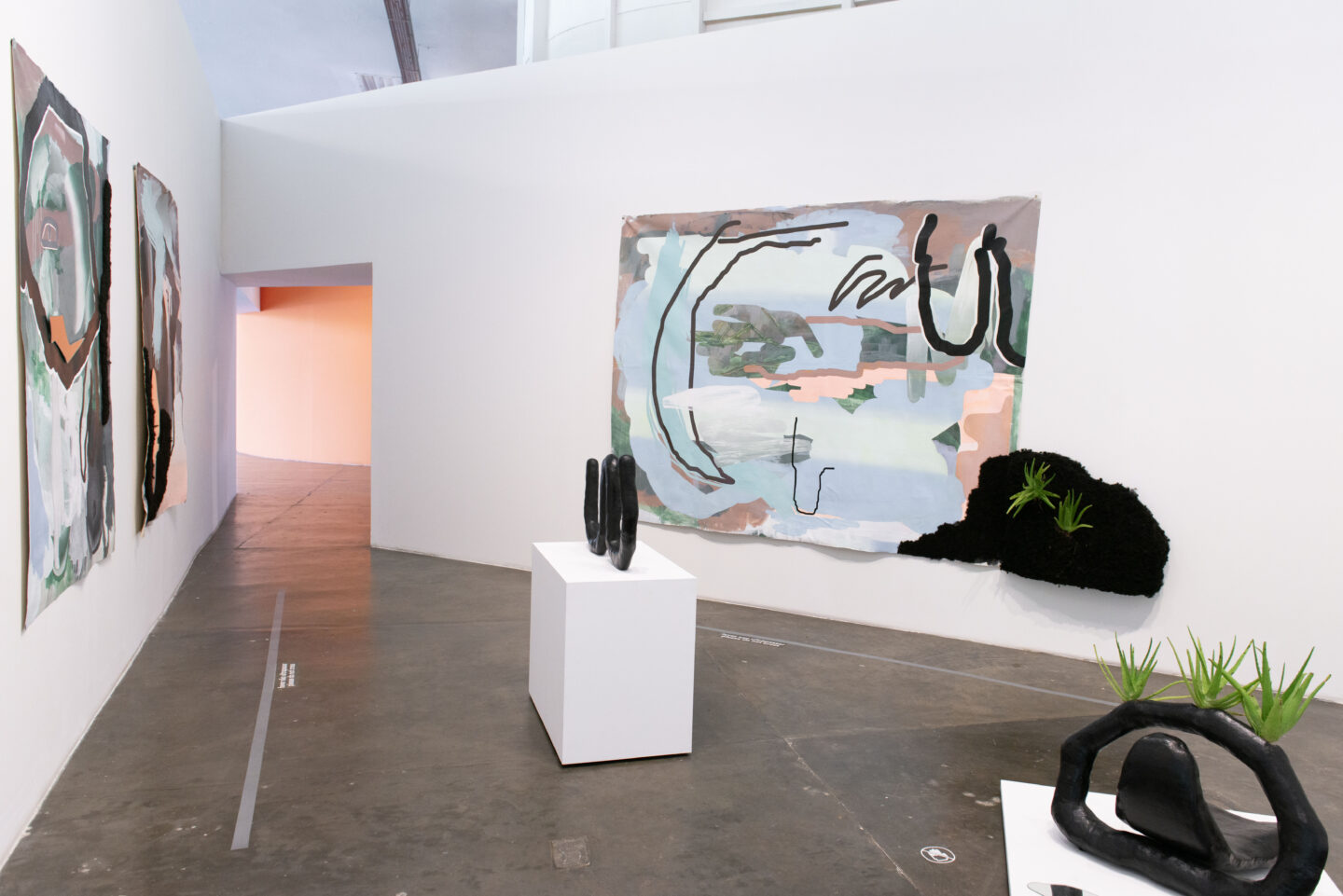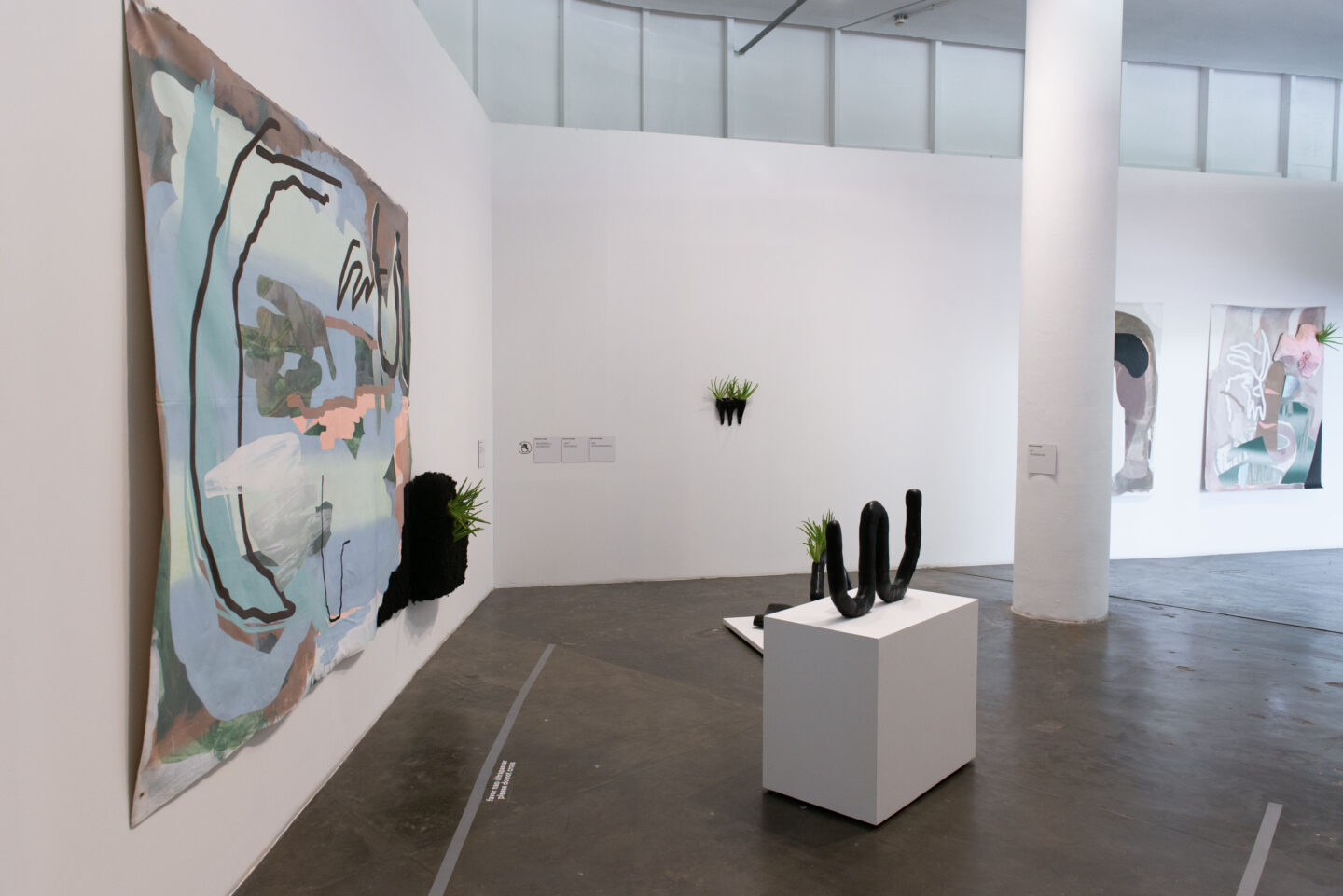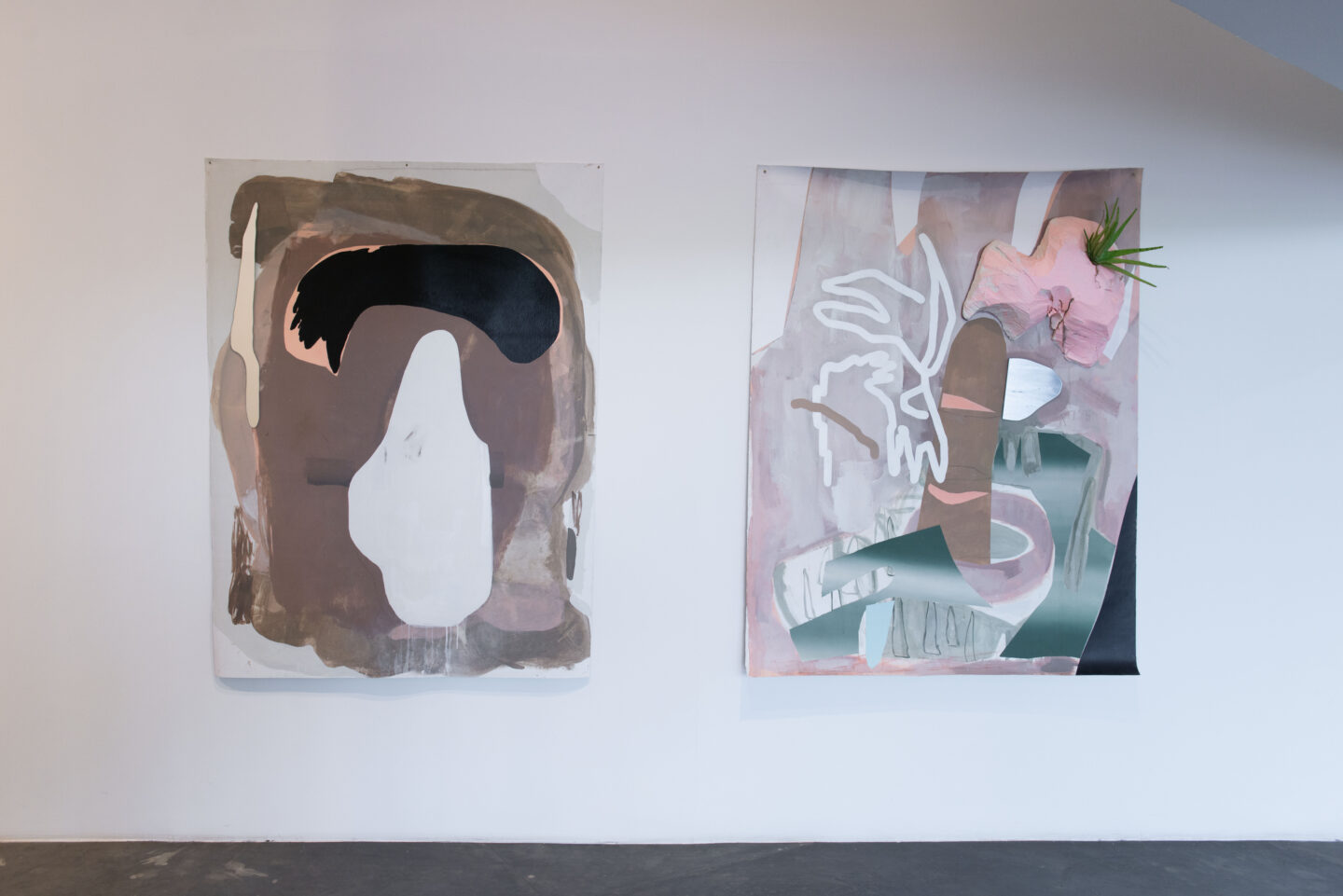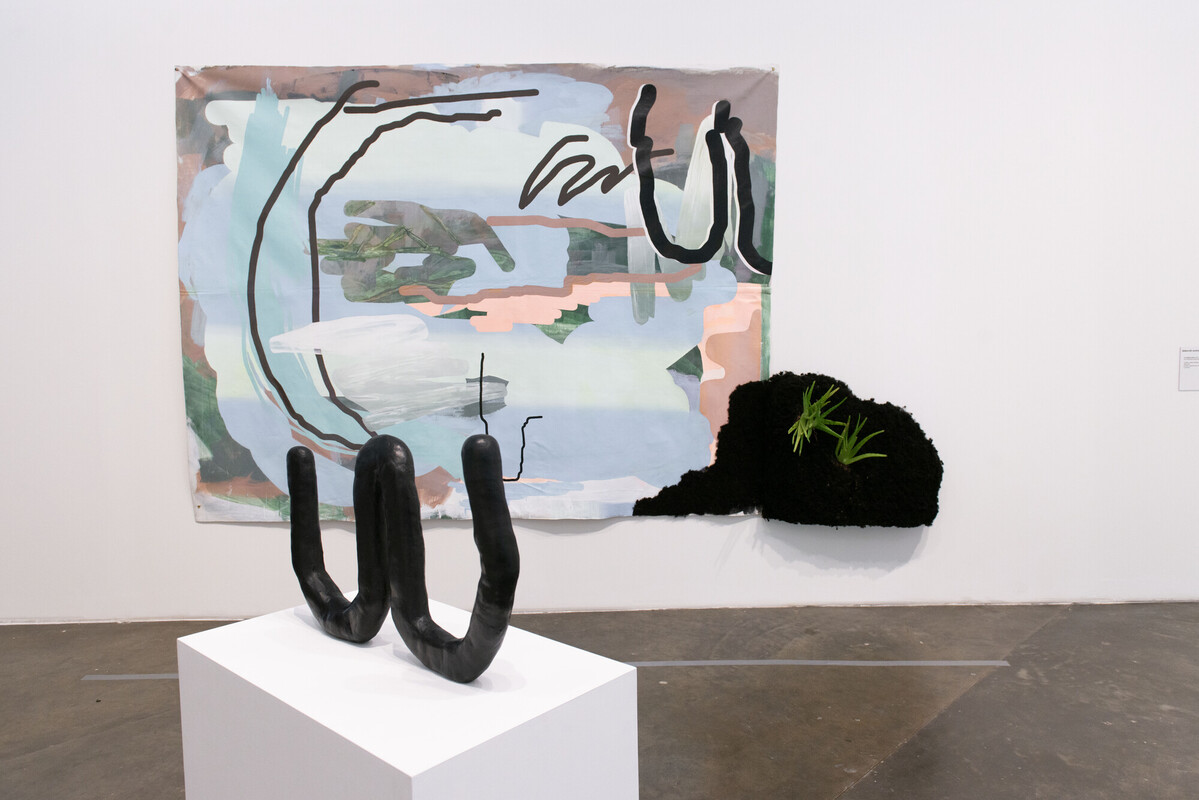
Deborah Anzinger
I have always thought of Deborah Anzinger’s work as essentially about syntax. That is, the structure of language, both verbal and visual. Her work asks us to think about the relationships that produce language; the relationship between subject and object, self and other, masculine and feminine, natural and artificial; binaries that oppose and constitute each other. These concepts, here identified by their verbal descriptors, are grounded in material in Anzinger’s work, and a rigorous materiality might be considered the second tenet around which her practice is organized.
Anzinger’s paintings refuse to stay on the wall, they will not surrender to painting’s purported two dimensionality. They insist on protruding, reflecting, growing and kinky-curling off the unstretched canvases. In them we find hand painted lines and gradients so perfectly rendered they look digital, living plants growing from death-dealing synthetic Styrofoam, and mirrors that turn the viewer into the viewed. In Anzinger’s universe, line drawings and paint strokes become sculpture, irises become tongues. Where there should be a hole we get an unfurling. Anzinger’s work is always forcing opposites together, destabilizing our binary thinking and taxonomizing, instead demanding the acknowledgement of a slippery, playful, sensual third way.
In this particular body of work, completed between 2016 and 2019, Anzinger’s focus is turned to reproductive labor; its sensuality, its fecundity, but also its violence. The synthetic kinky-curly hair in An Unlikely Birth (2018) is an unmistakable reference to Blackness, as well as the black line drawings that disrupt the abstracted landscape, which seems to be in the process of coming to being. As a Black woman, born into and making from the Caribbean, Anzinger is attentive to the ways that Blackness is often excised from, or suppressed into subservience in representations of the region. The painting disrupts the kind of palette we associate with the Caribbean – cheerful sky blues, the signature blue-green of the Caribbean Sea, and verdant greens – with scrawl-like drawings of breasts, that ultimate symbol of nourishment and sexuality; and grasping hand-like leaves, reminding us that nature has her own subjectivity, an agency that takes, as hurricanes do every year in this region, as much as it gives. And then, of course, that lump of kinky-curly black hair. Not quite in the painting, it is a sort of excess wherein aloe vera plants, celebrated for their healing qualities, grow against all odds from the hostile polystyrene that chokes waterways and poisons fauna. This, I would argue, is Anzinger’s point, even in the most inhospitable conditions healing things grow, and even in places of awe-inspiring beauty violence lurks.
nicole smythe-johnson
- Vista das obras Unfeed [Não alimentado] e Inhospitable [Inóspito], de Deborah Anzinger durante a 35ª Bienal de São Paulo – coreografias do impossível © Levi Fanan / Fundação Bienal de São Paulo
- Vista de obras de Deborah Anzinger durante a 35ª Bienal de São Paulo – coreografias do impossível © Levi Fanan / Fundação Bienal de São Paulo
- Vista de obras de Deborah Anzinger durante a 35ª Bienal de São Paulo – coreografias do impossível © Levi Fanan / Fundação Bienal de São Paulo
- Vista das obras Unfeed [Não alimentado] e An Unlikely Birth [Um nascimento improvável], de Deborah Anzinger durante a 35ª Bienal de São Paulo – coreografias do impossível © Levi Fanan / Fundação Bienal de São Paulo
- Vista das obras I Told You [Eu te avisei] e Coy [Recatado], de Deborah Anzinger durante a 35ª Bienal de São Paulo – coreografias do impossível © Levi Fanan / Fundação Bienal de São Paulo
Deborah Anzinger (Kingston, Jamaica, 1978) works with painting, sculpture and video. Her work has been exhibited at museums including the Institute of Contemporary Art (Philadelphia, USA), Kent State University Museum (Kent, USA), Pérez Art Museum Miami (Miami, USA), National Art Gallery of The Bahamas (Nassau, Bahamas), National Gallery of Jamaica (Kingston, Jamaica). She is the founder of New Local Space (Kingston, Jamaica).

 Português
Português